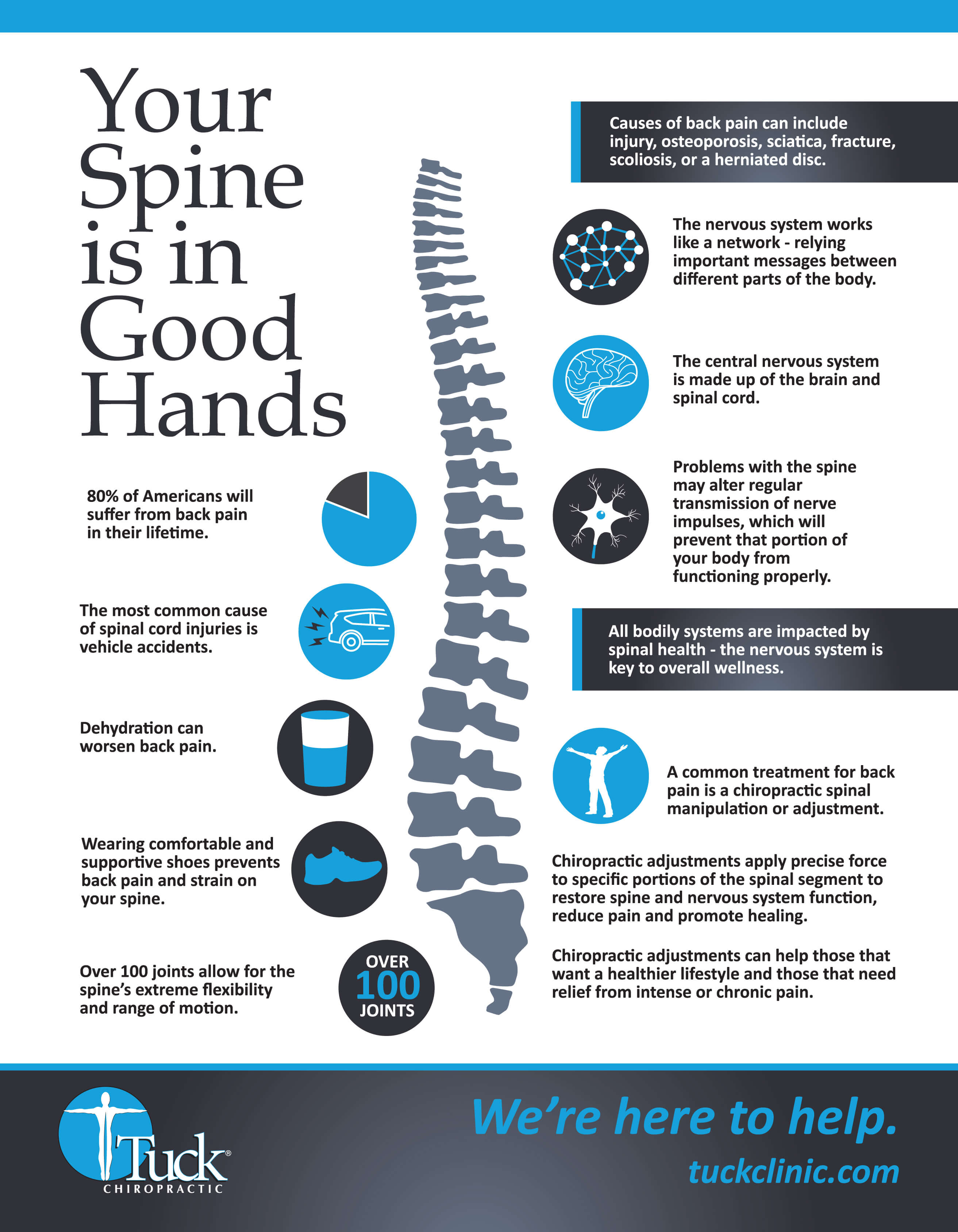If you're experiencing pain in the back, your body might be attempting to tell you something greater than just discomfort. The means your back really feels can provide valuable hints regarding your total wellness. Comprehending the particular type of discomfort you're feeling and any going along with signs and symptoms is key to unraveling the secret behind your discomfort. Let's discover the typical conditions and signs connected with different kinds of back pain to shed light on what your body may be signaling.
Sorts Of Back Pain
When it involves back pain, there are different kinds that you might experience. One typical type is muscle mass pain, often caused by overuse, pressure, or injury to the muscle mass and tendons sustaining the back. This type of discomfort can range from moderate discomfort to extreme and incapacitating discomfort.
Another kind is nerve pain, which can result from problems like herniated discs or sciatica. Nerve pain frequently presents as a sharp, shooting experience that radiates down the leg.
Joint pain in the back can originate from problems like joint inflammation or sacroiliac joint dysfunction. This kind of discomfort is normally really felt in the lower back and can be intensified by specific activities.
Furthermore, neck and back pain can be associated with structural troubles such as spine stenosis or vertebral cracks. Comprehending the kind of pain in the back you're experiencing is critical in identifying the appropriate therapy and monitoring methods.
Common Effects to Watch For
Moving beyond the numerous sorts of neck and back pain, it is very important to identify the common signs and symptoms that can signal underlying issues.
Consistent back pain that gets worse with activity or in the evening might indicate a much more significant problem. Numbness or tingling in the legs or feet, specifically when accompanied by weakness, might indicate a nerve-related problem. If why not find out more experience abrupt weight reduction in addition to pain in the back, maybe an indication of a much more systemic condition.
Take note of any modifications in bladder or bowel feature, as this could be linked to spine compression. High temperature, chills, or evening sweats combined with back pain might signal an infection. Watch out for discomfort that emits down one or both legs, potentially a sign of sciatic nerve pain.
Health And Wellness Conditions Linked to Back Pain
If you deal with pain in the back, it's crucial to comprehend the potential health and wellness conditions linked to this discomfort. Back pain can be a symptom of various underlying issues, consisting of muscle mass strains, herniated discs, osteoarthritis, spinal stenosis, and even problems like kidney stones or infections.
Muscle mass pressures are common and usually arise from lifting heavy items or abrupt motions.
Herniated discs occur when the soft cells between vertebrae protrudes, causing nerve irritability.
Osteo arthritis, a degenerative joint disease, can lead to back pain as cartilage wears down.
Spinal constriction, the narrowing of the spine canal, can put pressure on nerves.
Kidney stones might create extreme pain in the back if they relocate into the urinary tract.
Infections like back osteomyelitis can likewise show up as pain in the back. Recognizing these possible wellness conditions can help you look for ideal treatment and management for your pain in the back.
Verdict
So, following time your back harms, focus on the sort of discomfort and accompanying signs. Maybe visit the up coming webpage from your body concerning underlying health and wellness problems like muscular tissue stress, nerve concerns, joint problems, or perhaps structural problems. By identifying these indicators, you can take positive steps to deal with the origin of your back pain and boost your general wellness and wellness.
